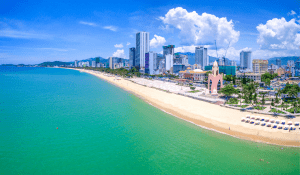
Searching for stunning beaches, delicious food, and Vietnamese charm? Discover our Nha Trang travel guide for your ultimate coastal escape.
Home • Destination • Vietnam • Vietnam Travel Guide

“The most beautiful in the world is, of course, the world itself.” - Wallace Stevens
Discover Vietnam’s rich history, vibrant beaches, efficient transportation, and delectable cuisine. Explore ancient temples in Hanoi and the bustling streets of Ho Chi Minh City. Unwind on Phu Quoc Island’s pristine shores and snorkel in Nha Trang’s crystal-clear waters. Efficient trains and buses connect major cities, while cyclos and motorbikes offer local charm.
Savour delicious pho, banh mi, and fresh seafood. Don’t miss the breathtaking Ha Long Bay and the cultural wonders of Hoi An. Experience the best of Vietnam’s diverse offerings in this unforgettable travel adventure.
Vietnam has a long and complex history that spans over thousands of years. The country’s history is characterized by a series of dynasties, occupations, and conflicts. It was under Chinese rule for nearly a millennium until gaining independence in the 10th century. In subsequent centuries, Vietnam flourished as an independent kingdom, reaching its height during the 14th and 15th centuries under the Tran and later the Le dynasty.
Colonial influence began in the 19th century when Vietnam fell under French rule, known as French Indochina. This period of colonization lasted until 1954 when Vietnam successfully fought for independence in the First Indochina War. This led to the division of the country into North and South Vietnam, which later resulted in the Vietnam War. The war ended in 1975 with the reunification of the country under communist rule.
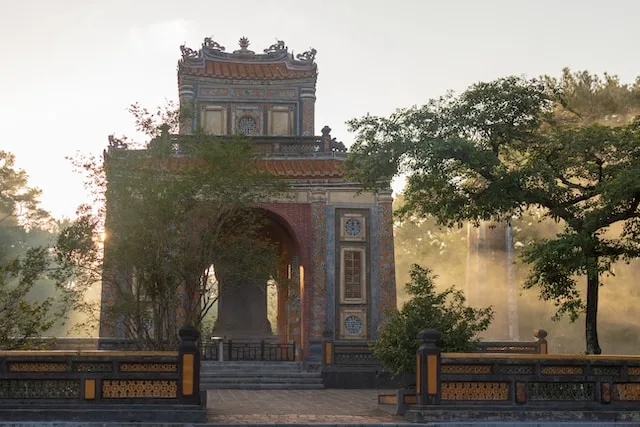
 Hoi An Couples Special- Amina or Shining Riverside
Hoi An Couples Special- Amina or Shining Riverside 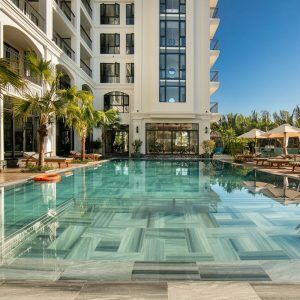 Shining Riverside Hoi An Boutique and Spa
Shining Riverside Hoi An Boutique and Spa  Soul Boutique Hotel Phu Quoc
Soul Boutique Hotel Phu Quoc 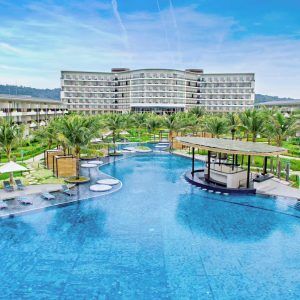 SOL by Meliá Phu Quoc
SOL by Meliá Phu Quoc 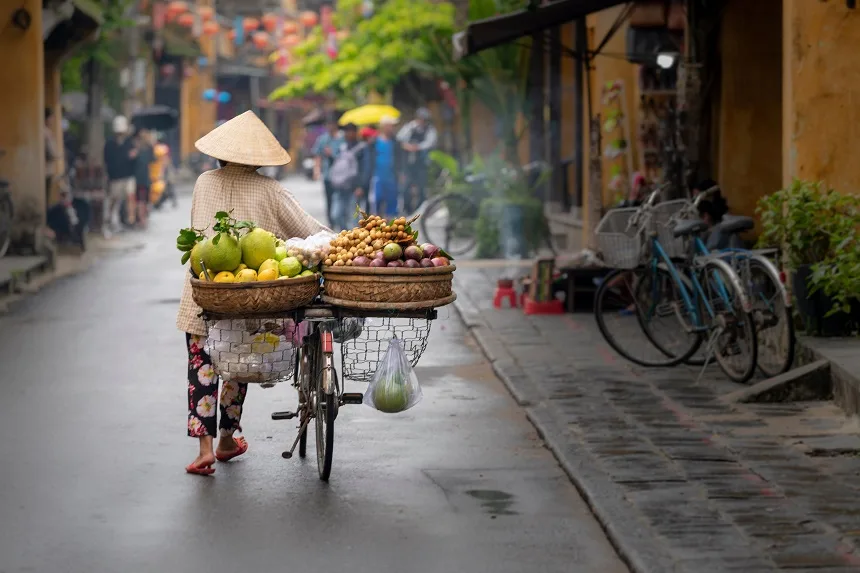
Vietnamese culture is a beautiful fusion of indigenous traditions, Chinese, and French influences. The people of Vietnam are known for their warm hospitality, strong community values, and deep respect for their ancestors. The country’s culture is deeply rooted in Confucianism, Buddhism, and Taoism, which shape various aspects of daily life.
Vietnamese cuisine is renowned worldwide for its flavorful dishes, fresh ingredients, and regional specialties. Pho (noodle soup), Banh Mi (Vietnamese sandwich), and Spring Rolls are just a few examples of the mouthwatering delicacies you can enjoy during your visit. Don’t forget to try traditional Vietnamese coffee, famous for its strong taste and unique brewing style.
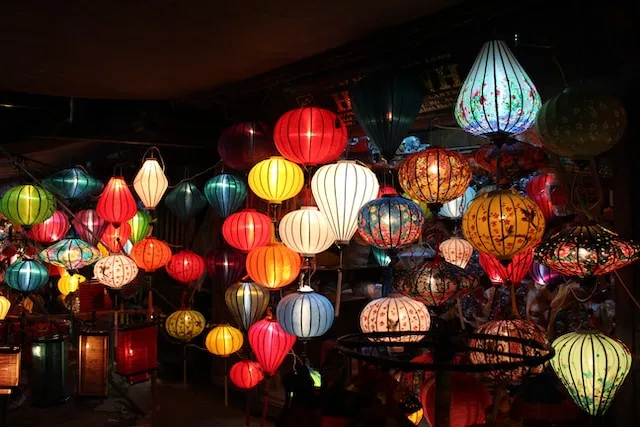
The arts and traditional performances also play a significant role in Vietnamese culture. Water puppetry, a form of puppet theater, is a must-see, where puppets are skillfully maneuvered on a water-filled stage. Vietnamese music, with its distinctive instruments like the dan bau (monochord), and the ao dai, the elegant national dress, are further expressions of the country’s cultural heritage.
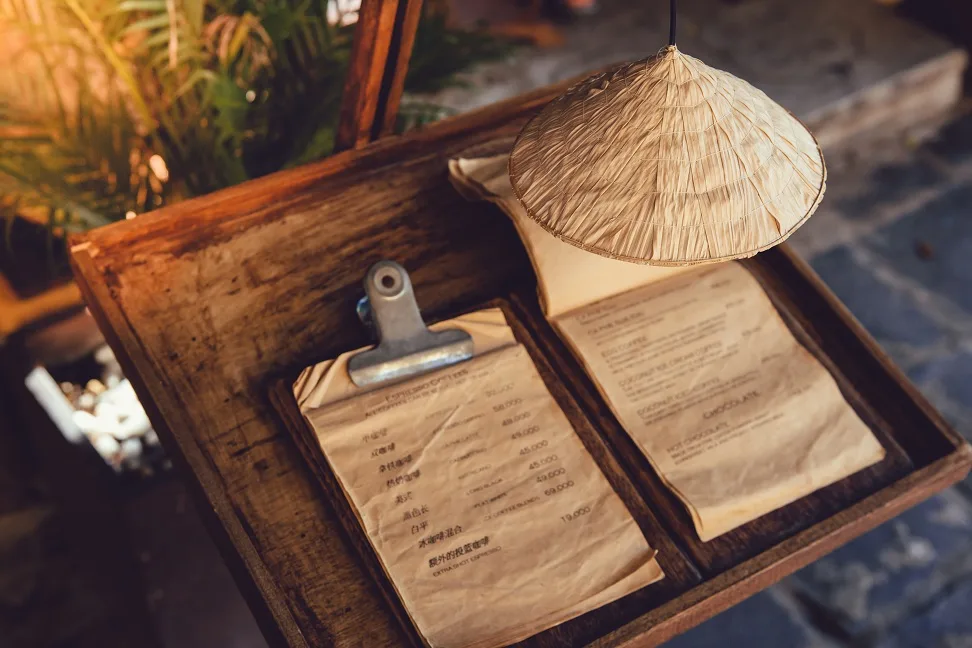
Vietnam offers a wide range of attractions that cater to various interests. From the bustling streets of Hanoi, the capital city, to the enchanting limestone karsts of Ha Long Bay, the country is brimming with natural beauty. The historic city of Hoi An showcases a well-preserved ancient town with traditional architecture and colorful lanterns, while Ho Chi Minh City (formerly Saigon) offers a bustling urban experience with its dynamic energy and historic landmarks.
For history enthusiasts, visiting the Cu Chi Tunnels near Ho Chi Minh City provides insight into the Vietnam War, offering a glimpse into the country’s wartime history. The imperial city of Hue, with its ancient citadel and royal tombs, offers a fascinating journey into Vietnam’s imperial past.
Vietnam’s diverse landscapes also provide ample opportunities for outdoor activities such as trekking in the mountainous regions of Sapa, exploring the Mekong Delta by boat, or relaxing on the pristine beaches of Da Nang and Nha Trang.

Vietnam’s rich history, vibrant culture, and diverse landscapes make it a captivating destination for tourists. Whether you’re seeking historical sites, natural wonders, or delicious cuisine, Vietnam offers a unique and unforgettable experience that will leave a lasting impression.

To travel from Australia to Vietnam, you have several options. The most common and convenient way is to take a direct flight from major Australian cities like Sydney, Melbourne, or Brisbane to one of Vietnam’s main international airports, such as Hanoi’s Noi Bai International Airport or Ho Chi Minh City’s Tan Son Nhat International Airport.
Multiple airlines offer direct flights between Australia and Vietnam, including Vietnam Airlines, Qantas, and Jetstar. The flight duration is approximately 8-9 hours.
Once you arrive in Vietnam, there are several transportation options to get around the country:
Vietnam has a well-connected domestic flight network, making it easy to travel between major cities. Airlines like Vietnam Airlines, Vietjet Air, and Bamboo Airways operate frequent flights.
Vietnam’s railway system is extensive and offers a scenic way to travel. The Reunification Express runs from Hanoi to Ho Chi Minh City, stopping at several destinations along the way. You can choose between different classes of trains, including sleepers for longer journeys.
Buses are a popular and affordable mode of transportation in Vietnam. You’ll find both government-run and private bus companies offering routes to various cities and towns. Sleeper buses are available for overnight journeys.
Local prices vary the average fares start at $0.60 AUD for local journeys, while longer trips would be around $0.90 to $1.80 AUD or more.
Taxis are readily available in cities, and ride-hailing services like Grab are widely used. Ensure the meter is turned on or negotiate the fare in advance to avoid any issues.
Renting a motorbike is a common choice for exploring cities and rural areas. However, be aware that traffic in Vietnam can be chaotic, so exercise caution and make sure you have the necessary licenses and insurance.
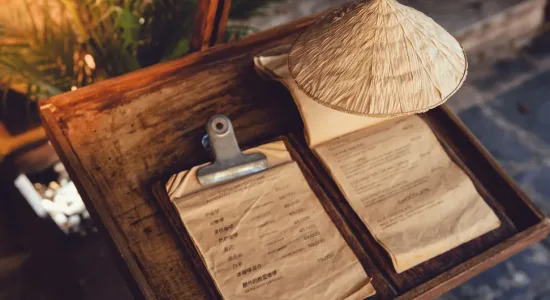
Vietnam is renowned for its delicious cuisine. Here are some dining recommendations to savor the local flavors:
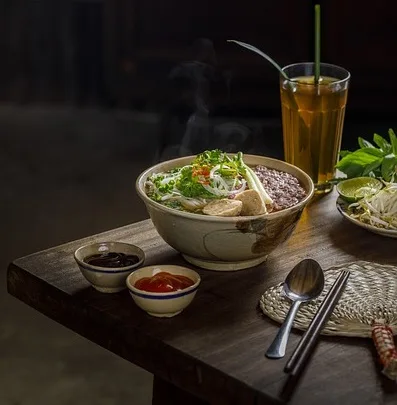
Try Vietnam's most famous dish, Pho, a flavorful noodle soup typically served with beef or chicken, fresh herbs, and lime.
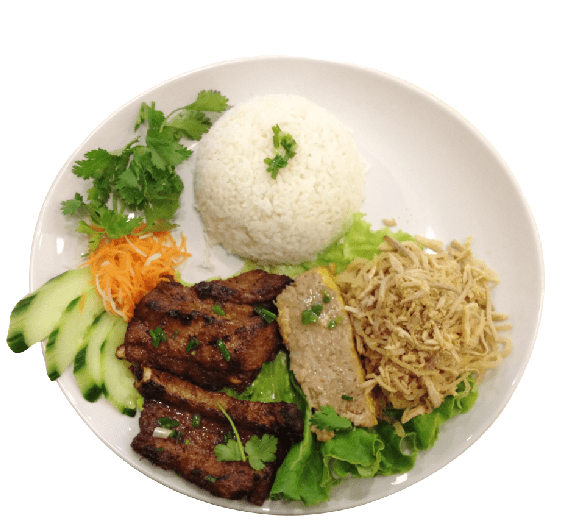
Com Tam is a dish of broken rice served with grilled pork chops, shredded pork skin, a fried egg, and pickled vegetables.
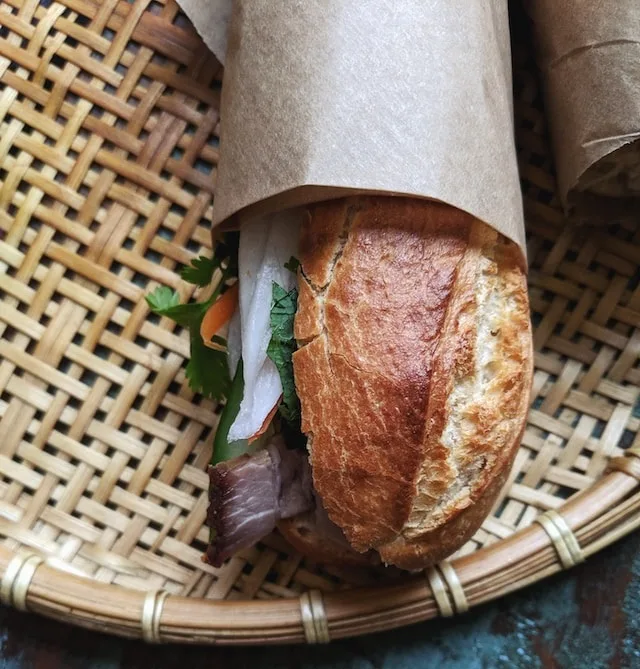
Indulge in a Banh Mi, a Vietnamese baguette sandwich filled with a variety of ingredients like grilled meats, pickled vegetables, and pâté.

Try Bun Cha, a Hanoi specialty featuring grilled meat served with rice noodles, herbs, and a sweet and savory dipping sauce.
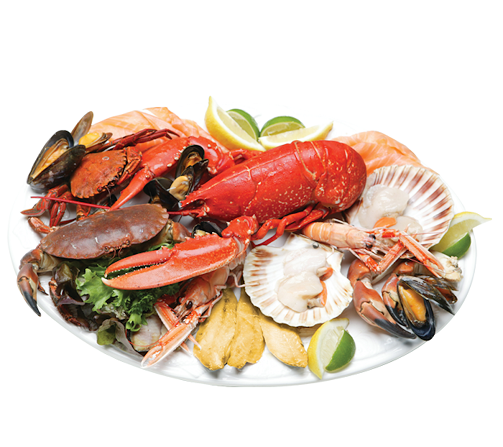
If you're near the coast, don't miss the opportunity to savor fresh seafood dishes like grilled fish, prawns, or squid.
Vietnam is blessed with numerous beautiful beaches along its coastline. Here are eight of the top beaches in the country:
Vietnam is a diverse country with numerous attractions. Here are some highlights you shouldn’t miss:
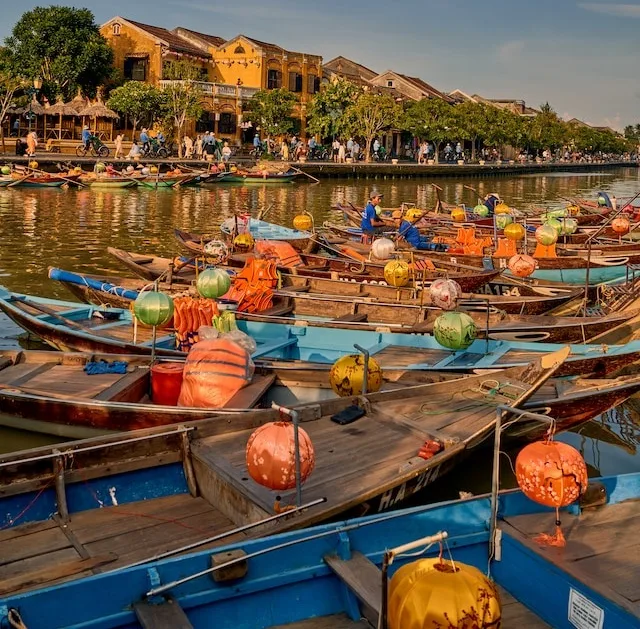
This UNESCO-listed town is known for its well-preserved architecture, charming lantern-lit streets, and vibrant cultural festivals. Don't miss the beautiful Japanese Covered Bridge and the colorful riverside markets.
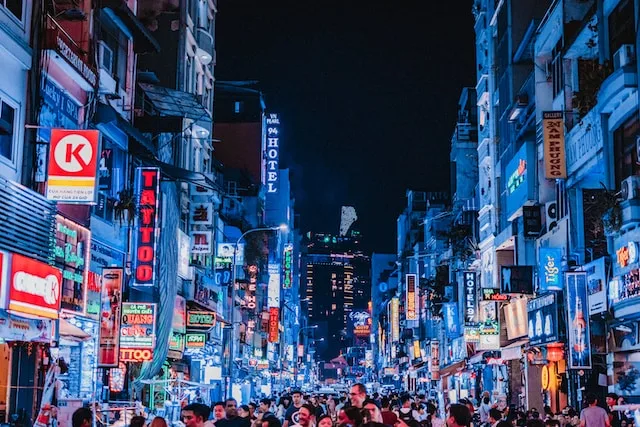
Formerly known as Saigon, this bustling metropolis offers a blend of modern skyscrapers and historic landmarks like the Reunification Palace and the War Remnants Museum.
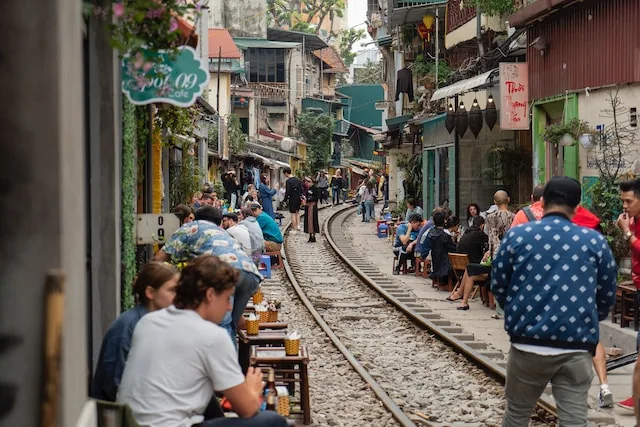
Vietnam's capital city is a fascinating mix of ancient temples, colonial architecture, and bustling street life. Visit the Hoan Kiem Lake, the Temple of Literature, and explore the vibrant Old Quarter.

A UNESCO World Heritage Site, Ha Long Bay is famous for its breathtaking limestone karsts, emerald waters, and scenic boat cruises.
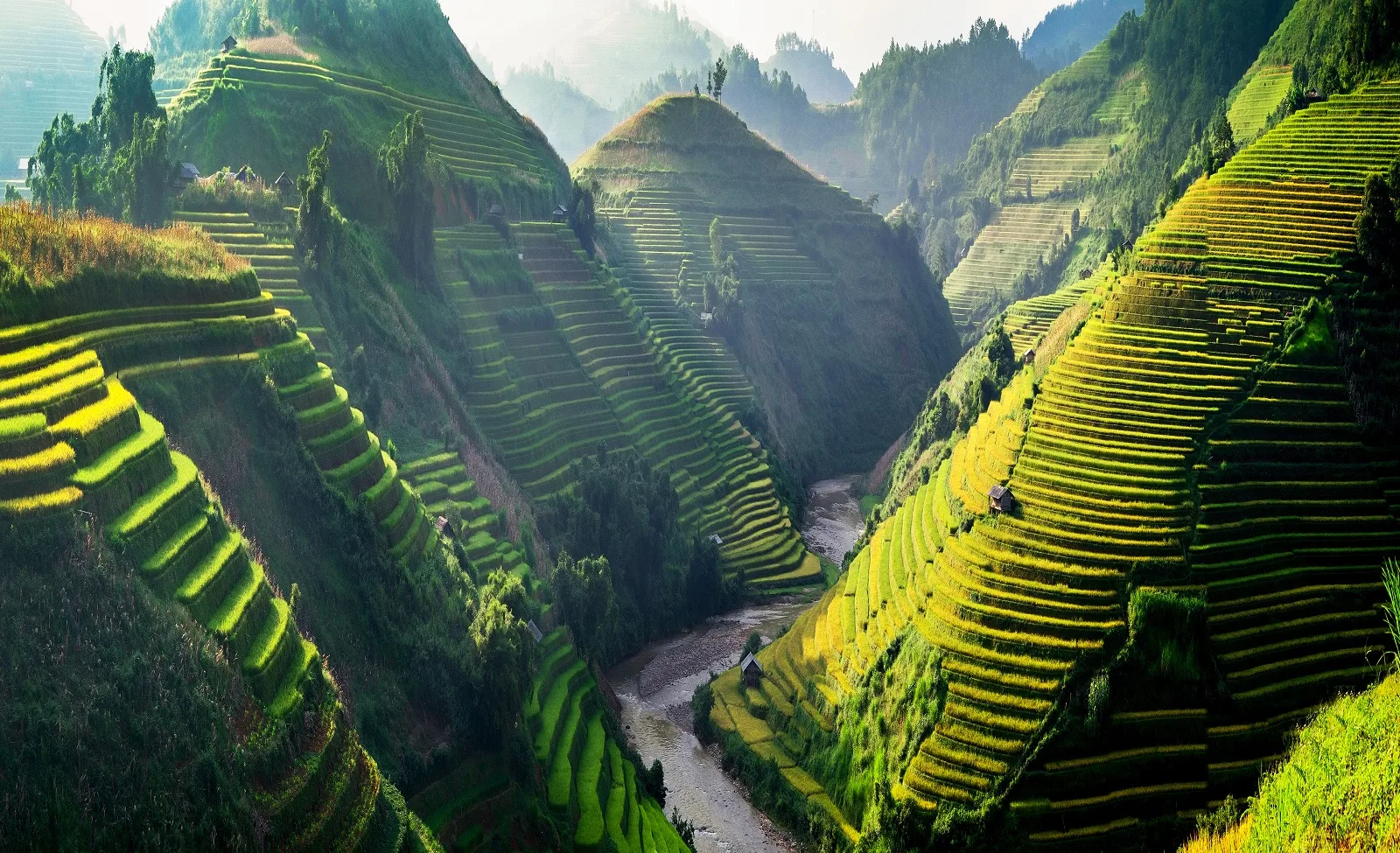
Located in the northwest region, Sa Pa is renowned for its stunning terraced rice fields, ethnic minority villages, and excellent trekking opportunities.
Apart from the highlights mentioned above, Vietnam offers a range of activities to make your trip memorable:
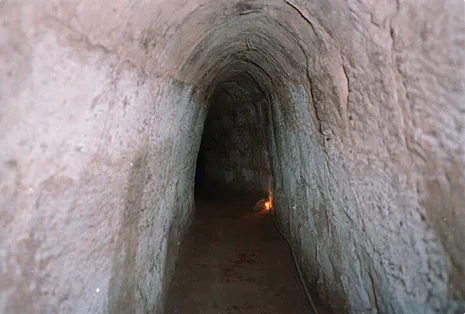
Located near Ho Chi Minh City, the Cu Chi Tunnels provide a glimpse into Vietnam's wartime history.
You can crawl through the underground network and learn about the Vietnam War.
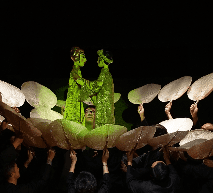
Thang Long Water Puppet Theatre is a cultural gem in Hanoi, Vietnam.
This traditional art form showcases captivating puppet performances on water, accompanied by live music, creating a unique and mesmerizing experience for audiences worldwide.

Head to Phu Quoc, Vietnam's largest island, for pristine beaches, crystal-clear waters, and vibrant coral reefs. It offers a range of activities, from snorkeling and scuba diving to exploring dense forests and hiking trails. You can also enjoy snorkeling, sunbathing, and fresh seafood.
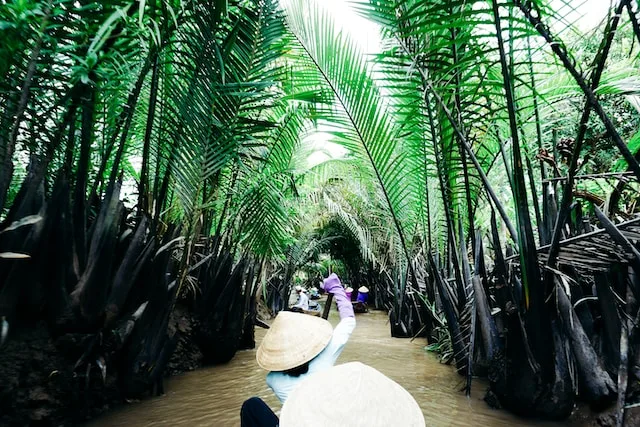
Take a boat tour through the intricate waterways of the Mekong Delta, where you can experience the vibrant floating markets, lush fruit orchards, and rural villages.

Embark on a trekking adventure in the picturesque landscapes of the northern highlands, such as the mountains of Sapa or Mai Chau. Experience the beauty of terraced rice fields and interact with ethnic minority communities.
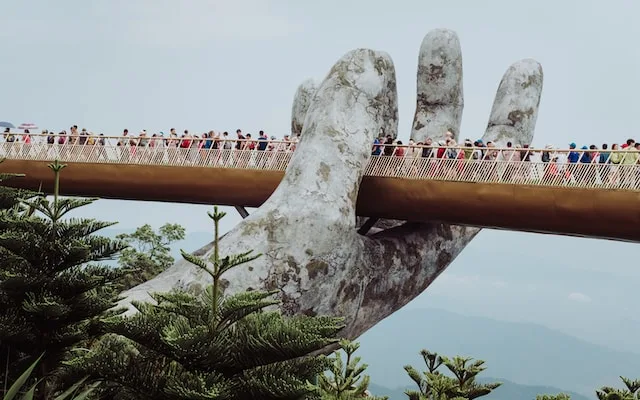
The Golden Bridge is a stunning architectural marvel located in Da Nang, Vietnam. It is a pedestrian bridge that stretches 150 meters in length and is supported by two gigantic stone hands emerging from the mountainside.
The bridge offers breathtaking panoramic views of the surrounding lush hills and provides an unforgettable experience for visitors.
 Hoi An Couples Special- Amina or Shining Riverside
Hoi An Couples Special- Amina or Shining Riverside  Shining Riverside Hoi An Boutique and Spa
Shining Riverside Hoi An Boutique and Spa  Soul Boutique Hotel Phu Quoc
Soul Boutique Hotel Phu Quoc  SOL by Meliá Phu Quoc
SOL by Meliá Phu Quoc 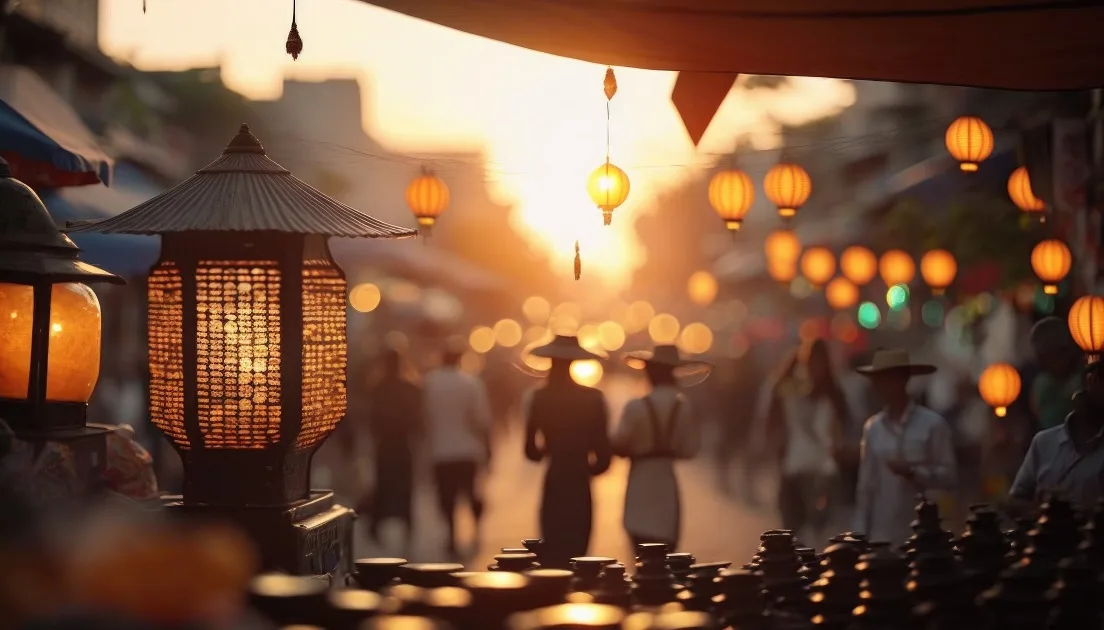
Vietnam has customs and traditions that reflect the local culture. Respect for elders is shown through polite language and gestures. Hospitality is valued, with visitors welcomed warmly.
Gift-giving is common when visiting homes. Dining etiquette involves sharing meals and offering a toast. Being mindful of cultural differences and showing interest in the local culture enhances interactions. These customs in Vietnam allow visitors to appreciate the cultural heritage while fostering respect and appreciation.
Govt.vn recommends that you should avoid hugging, holding hands, and especially kissing in public. Even touching a member of the opposite sex is looked down upon.
Modesty: It is important to keep your body covered. Avoid overly short shorts and revealing shirts.
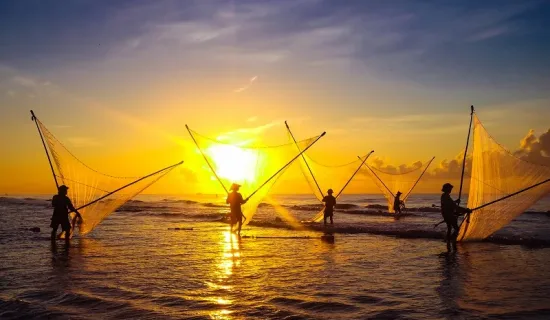
Vietnam’s weather varies across regions. The country has a tropical monsoon climate, characterized by distinct wet and dry seasons.
North Vietnam (Hanoi, Halong Bay): The best time to visit is from October to April when the weather is cooler and drier. Summers (May to September) are hot and humid, while winters (December to February) can be chilly.
Central Vietnam (Hoi An, Hue, Da Nang): The dry season is from February to August, with pleasant temperatures. The rainy season lasts from September to January, with occasional typhoons.
The dry season is from December to April, with high temperatures. The wet season occurs from May to November, with short but heavy showers.
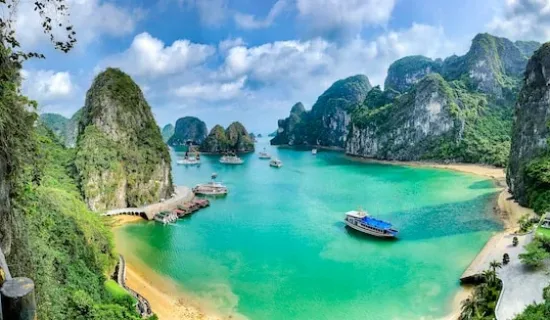
As an Australian tourist, you need a visa to enter Vietnam. You can apply for a Vietnam tourist visa in two ways: online e-Visa or visa on arrival.
It’s recommended to have travel insurance that covers medical expenses and other unforeseen circumstances.
Note: Please double-check the above links and requirements before submitting your application, as they are subject to change.
As of May 2023, tourists travelling to Vietnam from Australia are required to be fully vaccinated against COVID-19. The Vietnamese government accepts all COVID-19 vaccines approved by the World Health Organization (WHO) and the Vietnam National Regulatory Authority (NRA).
Here’s what you need to know about COVID vaccination requirements for tourists travelling to Vietnam from Australia:
1. Proof of vaccination:
2. Quarantine requirements:
Fully vaccinated travellers from Australia can avoid quarantine if they have a negative COVID-19 PCR test result taken within 72 hours before departure.
3. Health declaration form:
All travellers to Vietnam must complete a health declaration form, which includes information about their COVID-19 vaccination status.
4. Registration of vaccine status:
Currently, there is no requirement to register your vaccine status with the Vietnamese government.
Here are some useful links for COVID-19 vaccination requirements and information in Vietnam:
Please note that the COVID-19 situation is rapidly evolving, and entry requirements may change without notice. It is important to check the latest requirements with the Vietnamese embassy or consulate in Australia before travelling.
While Vietnam is generally safe for tourists, it’s still important to take precautions to avoid theft and stay safe. Be sure to keep an eye on your belongings and avoid walking alone at night, especially in less touristy areas. It’s also a good idea to carry cash in case credit cards aren’t accepted or there are issues with the card machines.


Searching for stunning beaches, delicious food, and Vietnamese charm? Discover our Nha Trang travel guide for your ultimate coastal escape.

5 Festivals in Hoi An to experience Vietnamese culture. Find out where they are, what to expect and when they are on.
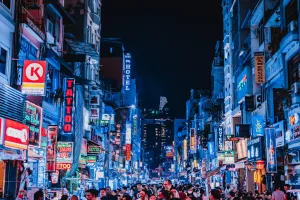
In our Ho Chi Minh City travel guide, you’ll find all of the markets, things to do, the best places to eat and more…

The Cham Islands (Cù Lao Chàm) is a group of islands located off the coast of Quảng Nam Province, Vietnam. The group includes several islands and…
Please ensure you have a confirmed booking with the resort before paying for flights.